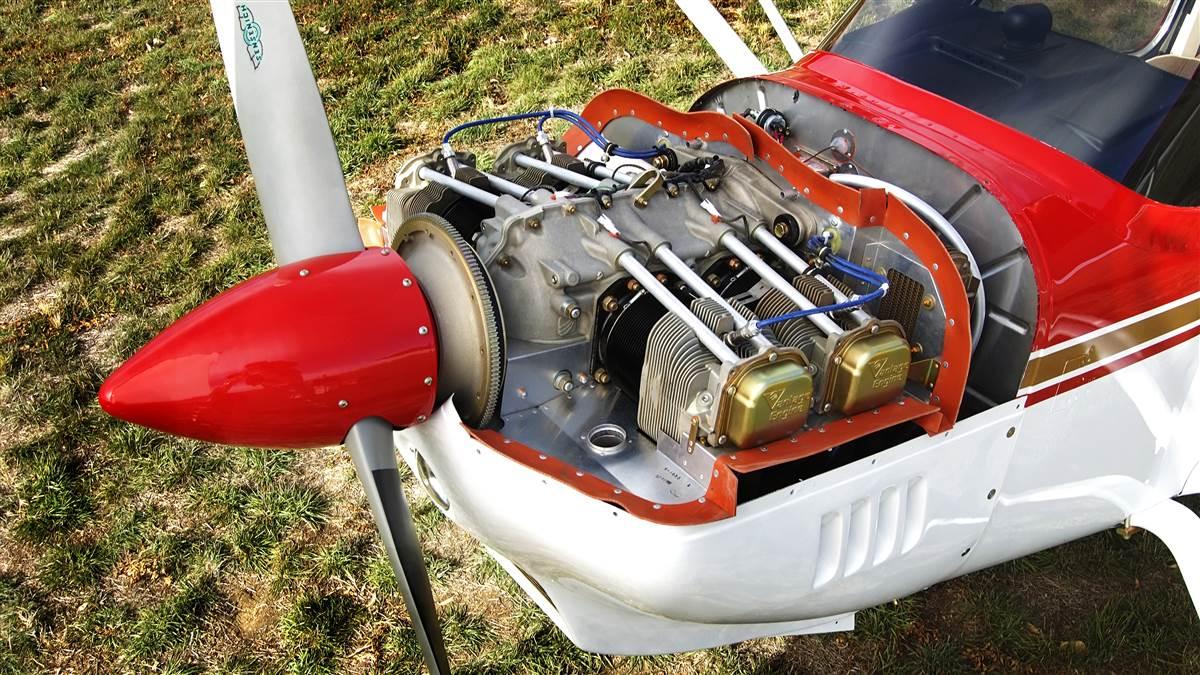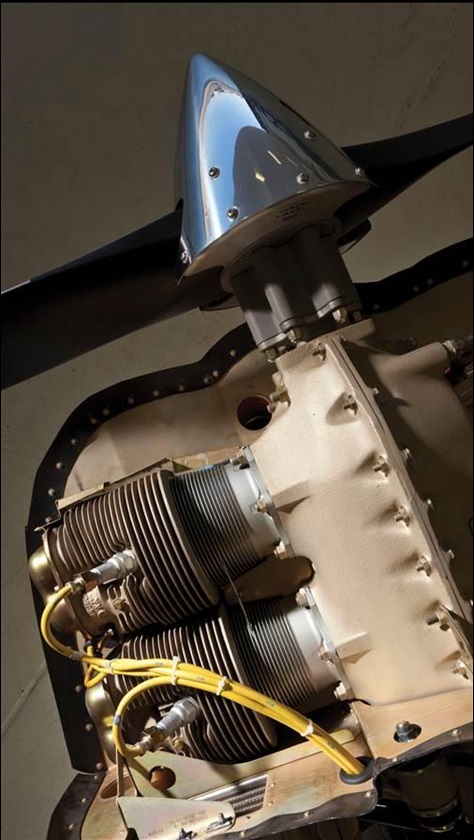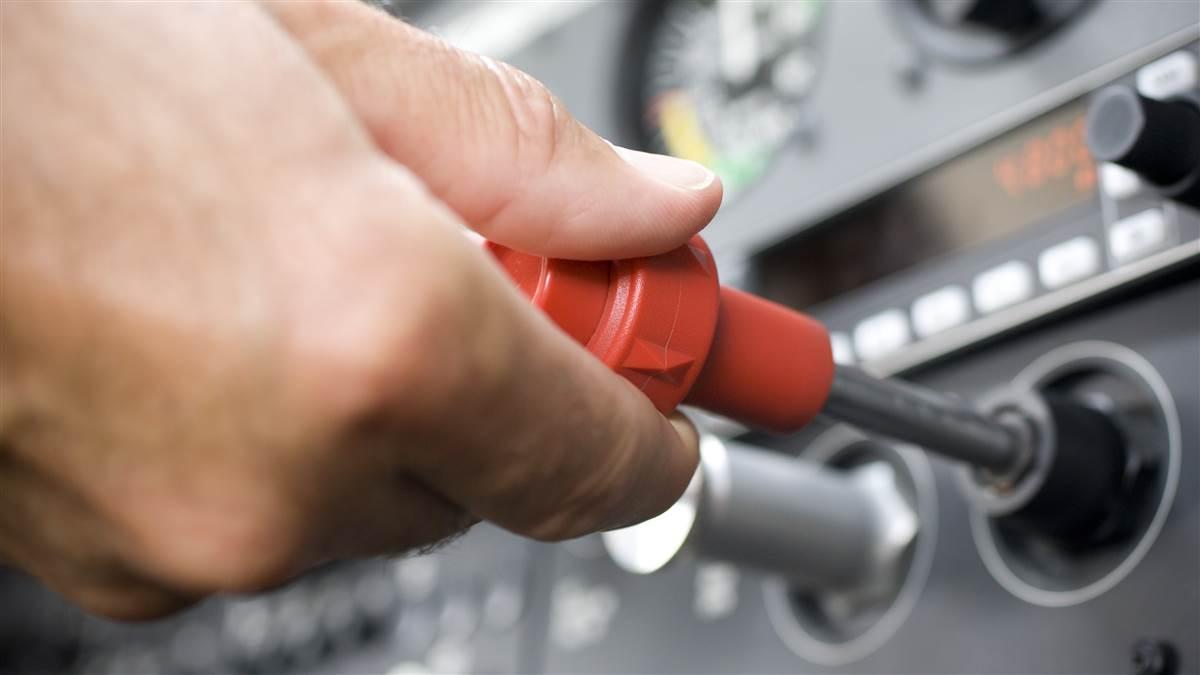Start your engines
Why do simple operations seem so hard?

Uh oh. The propeller makes a single, sad turn and the engine makes that noise seldom heard outside of classic cars in zombie movies. You stop, switch on the fuel pump for a few seconds, and try again. No dice. Again.
If you were the star of a movie, the engine would roar to life just as undead hands hit the door handle. But this is not a movie, and your passenger is fidgeting nervously. The propeller had no trouble spinning a moment ago when the previous renter taxied in. You smile sheepishly, but inside
Uh oh. The propeller makes a single, sad turn and the engine makes that noise seldom heard outside of classic cars in zombie movies. You stop, switch on the fuel pump for a few seconds, and try again. No dice. Again.
If you were the star of a movie, the engine would roar to life just as undead hands hit the door handle. But this is not a movie, and your passenger is fidgeting nervously. The propeller had no trouble spinning a moment ago when the previous renter taxied in. You smile sheepishly, but inside you’re thinking, No, no, no.
We start our cars every morning with hardly a thought, so what is it about aircraft engines that makes even the simplest task seem complicated?
In some ways, the characteristics that set the most common general aviation aircraft engines apart from car engines are the simplest solution to the challenges of flight. The engines are air cooled to keep them light; magnetos drive the spark plugs because they don’t require an external electrical source, so the loss of the electrical system won’t cause the engine to stop running in flight. But there’s another reason small aircraft engines seem like a relic of the past, according to airline pilot and 2016 FAA National Aviation Technician of the Year Adrian Eichhorn: “It’s the FAA.”
Although advanced technology such as electronic ignition is more widely available in the world of Experimental amateur-built aircraft, the cost to meet all the requirements for certification under FAR Part 23 has made innovation slow. “Most of our airplanes were designed and built, [and] certified, in the ’40s and ’50s,” said Eichhorn, an active general aviation pilot who flew his 1962 Beechcraft Bonanza around the world in 2016. Take a 1962 Bonanza and a 1962 Corvette, and compare them to the contemporary models: “Nothing about the car will be the same, whereas the airplane will be nearly identical,” he said. Older technology means all the sophisticated features that protect your vehicle’s engine and make it easier to operate aren’t there to help you in your aircraft—so understanding what’s going on under the cowling is important to keeping the engine healthy and avoiding dangerous, costly, or embarrassing situations.
The basics
All internal combustion engines convert chemical energy to mechanical energy in the same basic steps: They draw in a fuel/air mixture (intake), compress it (compression), ignite it so the gases expand (power), and allow the hot gases to escape (exhaust). Most general aviation aircraft engines complete this cycle in four strokes of a piston (see illustration below).
Spark-ignition engines comprise the cylinders, crankcase, and accessory housing. The magnetos—which use magnets to generate an electrical current that jumps a spark across the gap in each spark plug—generally are housed in the accessory housing. The spark plugs are in the cylinders, along with the intake and exhaust valves and pistons. The crankshaft and connecting rods are in the crankcase. Under the cowling, you’ll find additional parts outside the engine, such as starter, fuel lines, plug wires, and more.

Most training airplanes commonly used today have Lycoming engines. Continentals often are found on larger, higher performance aircraft such as Cirrus SR22s or Beechcraft Bonanzas. Newer Light Sport aircraft mostly sport Rotax engines, and diesel (technically, compression-ignition) models are slowly making inroads in the general aviation market, but the legacy fleet is dominated by Lycoming and Continental piston engines with similar characteristics: spark ignition, horizontally opposed, and air cooled.

These engines, which some pilots—affectionately?—call some version of Lycocontisauruses, operate similarly. Common problem areas include starting the engine, particularly when the engine was recently running (hot starts) or in the cold. Overzealous or neglectful leaning techniques also may take a toll.
The heat is on
Many newer aircraft use fuel injection systems to send fuel directly into the cylinders or just ahead of the intake valve. Fuel injection systems allow for better fuel distribution, better fuel flow, and a more precise control of the fuel/air mixture, and are less susceptible to icing than carburetors—but they can be difficult to start when the engine is hot. Air cooling is great when the airplane is at cruise speeds, but as the aircraft taxis back and shuts down, heat emanates from the engine and warms the adjacent fuel lines. The fuel inside the lines vaporizes, which blocks the flow of liquid fuel (vapor lock).
Check your pilot’s operating handbook for hot start procedures. Many will instruct you to run the fuel pump a few seconds with the mixture at idle cutoff and the throttle full open before starting the engine, advancing the mixture and cutting back on the power when the engine catches.
“You’re basically purging that vapor out of the lines and getting it to start,” said Eichhorn. This common procedure can take some time to master. “You almost need a third hand to do this,” he said.
Cold comfort
Although carbureted engines are less susceptible to hot-start problems, they can be more prone to problems starting in the cold. In the cold, air becomes denser and fuel vaporizes less readily. Getting the right fuel/air mixture in denser air means priming the engine with additional fuel to one or more cylinders, which can be trickier to get right with carbureted engines. (Aircraft that prime only one cylinder are especially hard to start in cold weather.) Lycoming recommends using the number of cylinders to prime, the temperature, and some trial and error to determine the number of strokes to prime an engine; priming more cylinders requires more fuel, and colder air also requires more fuel.
But be wary of pumping too much fuel into the engine; Eichhorn said the fuel may wash some of the oil off the cylinder walls and reduce lubrication in the engine. “Generally, people overprime,” he said.
Cold isn’t only a problem for carbureted engines; both Continental and Lycoming warn of potential damage to their engines if they are started in the cold without a proper preheat. “In extremely low temperature, oil congeals, battery capacity is lowered, and the starter can be overworked,” says Lycoming in a service instruction calling for preheats when the engine has been allowed to drop to temperatures below 10 degrees Fahrenheit for most models. “Improper cold-weather starting can result in abnormal engine wear, reduced performance, shortened time between overhauls, or failure for the engine to operate properly.” Continental’s service information letter offers a similar warning and calls for preheats whenever the engine has been exposed to temperatures at or below 20 degrees Fahrenheit (wind chill factor) for two or more hours.
You’re ready to go. Aircraft preflighted, passenger briefed. Ready for your next adventure, you shout “Clear prop!” and turn the key.“Think of your poor little engine,” Eichhorn said. “Your engine needs to get oil to as many parts of that engine as soon as possible….The lower the temperature, oil is less viscous. It’s like molasses.”
Before you crank the engine this winter, get an engine preheat or keep it in a heated hangar long enough to let all parts of the engine warm. No shortcuts: “Superficial application of preheat to a cold-soaked engine can cause damage to the engine,” Continental warns. “An inadequate application of preheat may warm the engine enough to permit starting but will not de-congeal oil in the sump, lines, cooler, filter, et cetera.” Engine damage may not be evident for hours, but it could be severe.
Lean on me
When it comes to car and aircraft engines, “The main difference is that red knob—the mixture,” Eichhorn said. The mixture control does just what it sounds like: controls the mixture of fuel and air going into the engine. For takeoffs at airports near sea level, procedures call for keeping the mixture full rich. But at altitude, air is less dense. Sending the same amount of fuel to the engine as the amount of air decreases results in an increasingly rich mixture as an aircraft climbs; this reduces performance, range, and endurance, and can cause carbon buildup on the spark plugs. Fouled spark plugs may, in turn, lead to engine roughness and a decrease in power. Pilots lean the mixture in cruise flight and during taxi operations to keep the engine operating efficiently and to prevent carbon buildup on the spark plugs.
What is the right mixture? “When I learned to fly, we didn’t have engine monitors,” said Eichhorn. “So the technique was pull it back until it gets rough and enrich it maybe 15 degrees. That was it.” Pilots still may produce a mixture that is rich of peak exhaust gas temperature (EGT) by pulling back the mixture until the engine runs rough, and then advancing the mixture until the engine smooths out. An EGT gauge makes it possible to lean more precisely to a desired rich-of-peak EGT setting.
If you continue leaning just past peak EGT, the exhaust gas temperature will start to decrease. Lean-of-peak settings may lower fuel consumption, which makes lean-of-peak procedures increasingly popular with owners of high-performance aircraft. But does that make lean-of-peak better? It depends on whom you ask.
“I generally don’t even get into conversations about this because it’s such an emotional subject,” said Eichhorn. He said many aircraft owners operate lean of peak because they think they’re saving fuel and protecting their engine. But safe lean-of-peak operations require precisely calibrated fuel injectors, sophisticated engine analyzing gear—and skill. “If you don’t do it properly, you will damage your engine,” he said. So, although Eichhorn flew his engine lean-of-peak around the world, he doesn’t recommend it—particularly for student pilots. And if he encounters a rough-running engine, he always checks to see if the mixture is too lean.
Eichhorn said he wishes every airplane had an engine monitor to give clues to the health of the engine and help with troubleshooting. But even without one, an understanding of how the engine operates can help students identify and address problems as they develop.
“The motor’s kind of like our body,” he said. “Our body, when we get pain, it’s telling us something’s not right. When an engine’s running rough, it’s telling us something’s not right.”




